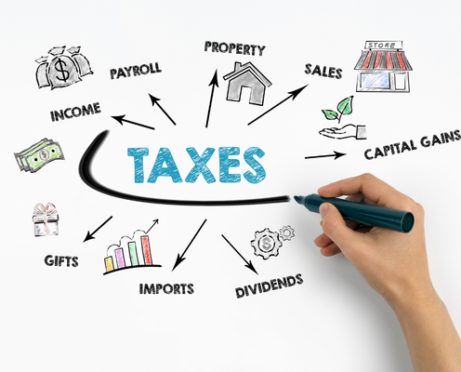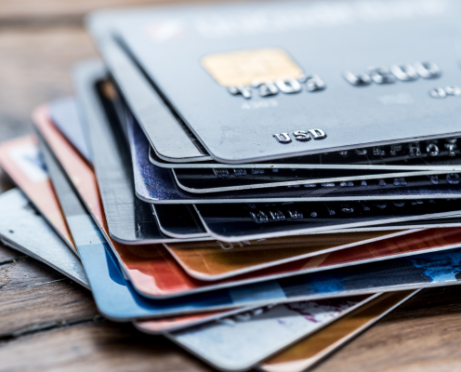
How nice would it be if there were a single best method to pay off credit card debt? Total household debt in the United States has reached $14.96 trillion, according to the New York Federal Reserve. And outstanding consumer debt is at a record high $4.3 trillion, according to the Federal Reserve.
With such significant debt weighing over the heads of Americans, a structured payoff method could help millions of struggling people.
Unfortunately, this is not the case, and each family has to come up with their own solution.
My husband and I have tried many ways to solve our debt problem, each with mixed results. After several attempts using a variety of methods, we hit upon a well-known strategy that we hadn’t tried before: consolidating our credit card debt with a personal loan.
Tried and Failed Methods
To pay off our debts, my husband and I first attempted the snowball method: making payments to reduce our smallest debt balance, then going down the list of debts from smallest to biggest.
“The snowball strategy has a psychological benefit of seeing a debt balance eliminated, which can create momentum to continue paying off debt quicker,” says Jason Dall’Acqua, a certified financial planner (CFP) and president of Crest Wealth Advisors.
“It can have hidden costs though, as your larger debts may have a higher interest rate, costing you more over the long run since these balances won’t be paid in full until a later point,” Dall'Acqua says.
Next, since my husband and I were determined to eliminate our debt as quickly as possible, we started paying it down aggressively. We would pay off our entire balance, but that eventually resulted in us paying for our regular living expenses and household costs via plastic.
Then, we tried the juggling method of making monthly debt payments while also making many, many balance transfers to cards with a zero percent Annual Percentage Rate (APR).
Each of these methods had benefits and drawbacks, but the juggling act was the most difficult.
Yes, the juggling method was the easiest on our wallet, but with that came the endless balance tracking and constant vigilance needed to make sure that everything was getting paid on time.
After many long talks about our money, my husband suggested that we put a stop to this unending tension by paying off all of our credit cards in one fell swoop — using a personal loan to consolidate our credit card debt.
Pros of Using a Personal Loan to Pay Off Credit Card Debt
A personal loan can be a great answer to your situation when you’re paying high interest rates on multiple credit card accounts. Here’s why.
1. Lower Interest Rate
The average credit card interest rate charged in 2021 is 16.3 percent, according to the Federal Reserve.
When we were comparing personal loan rates, we compared four different companies and landed on an interest rate of only 10.89 percent. That’s significantly lower than the typical credit card APR, and it will save us a large chunk of money over the long term.
2. A Single Payment
Having just one, smaller payment to make each month seemed a lot easier and doable than the four different payments we were making. It was nice not having to pay multiple amounts throughout the month.
3. Pay Off Debt Sooner
Besides, it’s often faster. Two of the primary advantages of using a personal loan to pay off credit card debt are to reduce the monthly payment amount and get out of debt faster. You won’t always do both; there is a trade-off between the term of your personal loan and how much of a reduction in payment you achieve.
If you go with a shorter term, you will pay off the debt faster, saving a lot in interest expense. If you opt for a longer term, you may not gain time but will have a lower payment and have more cash flow to build a healthy budget going forward. Either way is a win. It depends on what term works best for your situation.
In many cases, your credit score will get a boost from paying off your credit card debt. “A personal loan can help you pay off your credit card debt right away, and this will result in an increase in your credit card score,” says CFP Justin Nabity, the CEO of Physicians Thrive.
“But you need to remember that paying credit card debt does not mean you are free of debt as now you will have to pay off your personal loan,” Nabity adds.
Even with that in mind, it was nice not stressing about the next zero percent APR deadline. And it was nice not doing the juggling act — to make only a single payment each month.
Since going this route, my husband and I have been able to simplify our debt payoff and avoid the long discussions about how to handle our debt. Our financial conversations are now quick updates about the progress we’ve been making toward becoming debt-free.
Cons of Personal Loans
As you may have guessed, there are also drawbacks to using a personal loan to pay off credit card debt.
1. Paying More Interest
If you don’t have good credit, the personal loan for which you qualify may have a higher interest rate than that of your credit cards. You don’t want to end up paying more than the original credit card interest, so you should choose carefully, as this can drive you deeper in debt.
Also, Nabity adds: “Some personal loan lenders also charge fees to borrow money. This can add more money to your loan.”
2. Could Lead to More Debt
When my husband and I consolidated our debt from four credit card accounts into a single personal loan, our monthly debt payment dropped from $891 to $517. While the extra cash flow has helped our budget, it would be all too easy to use it for discretionary spending. But doing this would slow down our debt payoff plan and keep us in debt longer.
So we’re using the extra funds to build up an emergency fund, which will help prevent us from getting further into debt. The personal loan should jump-start getting out of debt sooner — not lead to staying in debt longer.
Tips for Credit Card-Debt Consolidation
Consolidating credit card debt into a personal loan can save you the trouble of juggling multiple debts with different companies. However, that doesn’t mean you’re out of the woods yet. There are a number of additional steps you should take when using a personal loan to pay off credit card debt.

1. Abstain From Using Credit Cards
Once you’ve shifted your debt from credit cards to a loan, don’t slip back to carrying a balance. Doing so will amplify your debt, requiring you to focus on paying off both a consolidated personal loan and your plastic debt. Make a pact not to use your credit cards anymore — and faithfully pay back your personal loan every month.
2. Improve Your Spending Habits
Just because you’ve consolidated your credit card debt into a personal loan doesn’t mean you can stop creating better spending habits.
“You will have to come up with a plan that will help you to pay off this loan without getting you into new credit card debt,” Nabity adds. Committing to a budget and sound money management practices can help ensure your personal loan helps you improve financially.
The Bottom Line
Taking out a personal loan in order to repay your credit card debts can help you simplify payments and ensure that you can repay your debt faster. In many cases consolidating high interest credit card debt into a personal loan results in significant interest savings. Helping your budget is nice; paying a lot less in interest can be a game-changer.
Before making a decision, research all your options and make sure that you know what you’re getting into.
If you do think that taking out a personal loan is your best option, make sure you’re keeping an eye on the interest rates and that you’re comparing lenders. In the long run, it can save you thousands.
Want to learn more about personal loans? Check out our ultimate guide to personal loans.
Additional reporting by Connor Beckett McInerney and Lukas Shayo.








